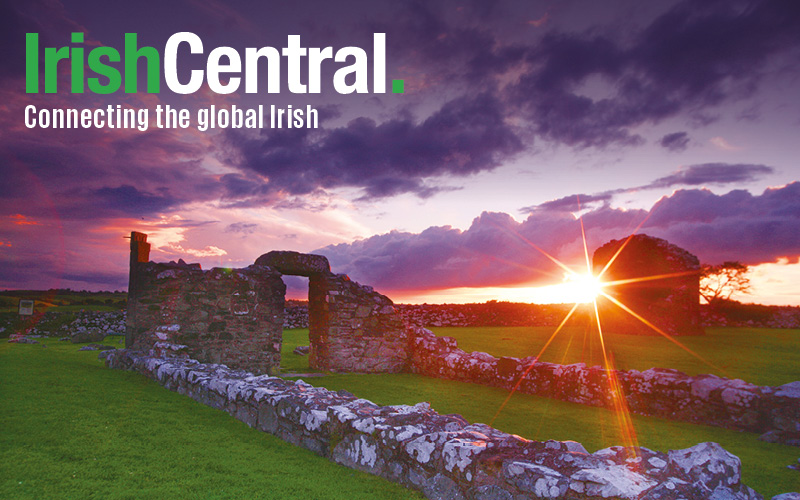From Northern Ireland's "Troubles" to the era of "fake news" - when could we trust the Irish media?
The reliability of today’s media was one of the many topics discussed at the Q&A that followed a John Pilger talk in Dublin last October. However, it quickly descended into a predictable and tiresome discussion.
Most of the comments and questions about today’s media focused on the buzzwords ‘post-truth’ and ‘fake news’. The basis of that argument being that today’s media is not reliable. And as the questions continued it began to sound more like collective, or even selective, amnesia where you’re left wondering who exactly is guilty of ‘fake news’?

John Pilger in the Edmund Burke Theatre Trinity College (Photo Credit: Peter Kearney)
Rather than exclaiming:
‘Why can’t we rely on today’s media?’
A more pertinent question would have been:
‘When could we?’
Mistrust of the media is not a recent phenomenon nor is it the creation of the current US administration. The narrative of the media’s past reliability is a fantasy. A rose colored glasses view of the past when we were younger and everything was simpler. How many institutions from the past did we trust that we continue to trust today? Are our media institutions any different?
It is these mythical media days of the past that every amnesiac microphone general loves chattering on about whenever someone of Pilger’s stature comes to town. Those at the talk that have also followed the media’s coverage of current affairs over the last four decades, must have been wondering when exactly these halcyon days were.
Growing up in close proximity of the northern and southern Irish border during the conflict between the IRA and British forces, it is difficult to recall a time when the Irish media reported objectively. A conflict still euphemistically referred to as ‘The Troubles’.

Falls Mural (Photo Credit: Ricky Flickr.com)
Labeling by the Irish Media
How self-respecting journalists still refer to the conflict as ‘Catholic V Protestant’ is mind-boggling. Even if we neglect the fact that there are Catholics and Protestants that both support a United Ireland and a union with Britain, it has been acknowledged by many that this was, in fact, a battle for territory as well as for civil rights. But never religion.
In addition, those who oppose the motives and tactics of Irish Republicans during this period cannot have it both ways. They cannot castigate them for fighting and losing a war for territory and then deny them any claim to the civil and political rights that were won.
The period of the conflict was also filled with misinformed narratives that regurgitated the notion that the UVF, UFF and UDA (British Loyalist ‘terrorist’ organizations) were a response to the IRA. They neglected to mention that the UVF was originally established in 1912, long before the IRA came into existence, and it was indeed the newer version of the UVF, as well as other British ‘terrorist’ organizations, that struck the first blow in the IRA/British forces conflict.
The microphone generals could do a lot worse than reading and absorb the contents of The BBC’s ‘Irish troubles’ Television, conflict and Northern Ireland by Robert Savage to uncover more about the past days of media reliability.
Section 31
Meanwhile, in the south of Ireland Section 31 of the Irish Broadcasting Act was gainfully employed by successive Irish Governments to force the media to impose very strict censorship on political opinion. Some in the media, with past axes to grind, did so willingly. In reading up on Section 31 we recall the story of RTÉ Journalist Kevin O’ Kelly who, during the trial of Seán Mac Stiofáin in 1972 for IRA membership, was jailed for contempt of court for refusing to outline the circumstances of an interview he had conducted with him as Chief of Staff of the Provisional IRA. While O’ Kelly only spent 2 nights in prison he was initially sentenced to three months. At this trial Judge Walsh remarked:
“Journalists and reporters are not any more constitutionally or legally immune than other citizens from disclosing information received in confidence. The fact that a communication was made under terms of express confidence or implied confidence does not create a privilege against disclosure.”
This case also lead to the dismissal of the entire Authority of the state broadcaster RTÉ.

Seán Mac Stiofáin former IRA Chief of Staff (Photo Credit: Burns Library, Boston College Flickr.com)
Seán Mac Stiofáin former IRA Chief of Staff (Photo Credit: Burns Library, Boston College Flickr.com)
However, the political bias in Irish media was not always lead by the state. It was sometimes lead by journalists themselves against their own colleagues. Nowhere is this more clearly underlined than in President Mary Mc Aleese’s book, The Road From Ardoyne. A chapter in this book (‘It Was the Worst of Times’) describes the harassment and bullying she was subjected to by her journalistic colleagues for attempting to report on the 1981 hunger strikes and Bobby Sands by-election. A number of her colleagues were former members of Official Sinn Féin, which had by then almost completely evolved into The Worker’s Party, who was still quite bitter towards anything connected to Provisional Sinn Féin.
While Section 31 was a draconian piece of legislation, RTÉ appeared to do little to fight it. Instead of supporting journalists who tried to find legal avenues around the legislation, such as the UK’s use of an actor’s voice over those from banned organizations, RTÉ simply transferred journalists who challenged this legislation to less harmful areas of reporting. Kevin O’ Kelly subsequently became religious affairs correspondent. Furthermore, RTÉ's policy on the ban effectively meant there was little or no archive material kept on this period.
Double Standards on Mandela
In this light, it is perplexing to observe that the Irish media praised and glorified politicians like Mandela while he remained on an international terrorism watch list until 2008. We can argue the rights and wrongs of Mandela being on such a list but it is undeniable that that same Irish media vilified Irish ‘terrorists’. Even more perplexing as Mandela even expressed his opposition to the IRA decommissioning their arms.
The Media Today
Whether the mainstream media of today is more no less trustworthy than it was in the past is for each individual to decide. Maybe it is people’s memories that have changed or have become obscured or maybe it is the longing for the past that trumps a proper analysis?
In fact, one could argue that a much less hostile atmosphere exists today for journalists as exemplified by the actions of Irish Times Journalists during the planning tribunal. Even after destroying evidence provided by a source, which the journalists were ordered to hand over by the Planning Tribunal established by a resolution from the Irish Parliament, the journalists won their case. Admittedly their paper had to pay a hefty sum in costs but they faced neither jail nor demotion despite their actions.
This one example does not paint the full picture as other journalists certainly have suffered for their craft in the modern era. Thus proving that very little has changed. While attempts to silence journalists reporting has not deteriorated it has not significantly increased either. More than this what is unfortunate about today’s media is that the courage to defend such journalists, one’s own colleagues, has not increased either.

Gemma O Doherty Journalist (Photo Credit: Sinn Féin Flickr.com)
This article was submitted to the IrishCentral contributors network by a member of the global Irish community. To become an IrishCentral contributor click here.




Comments